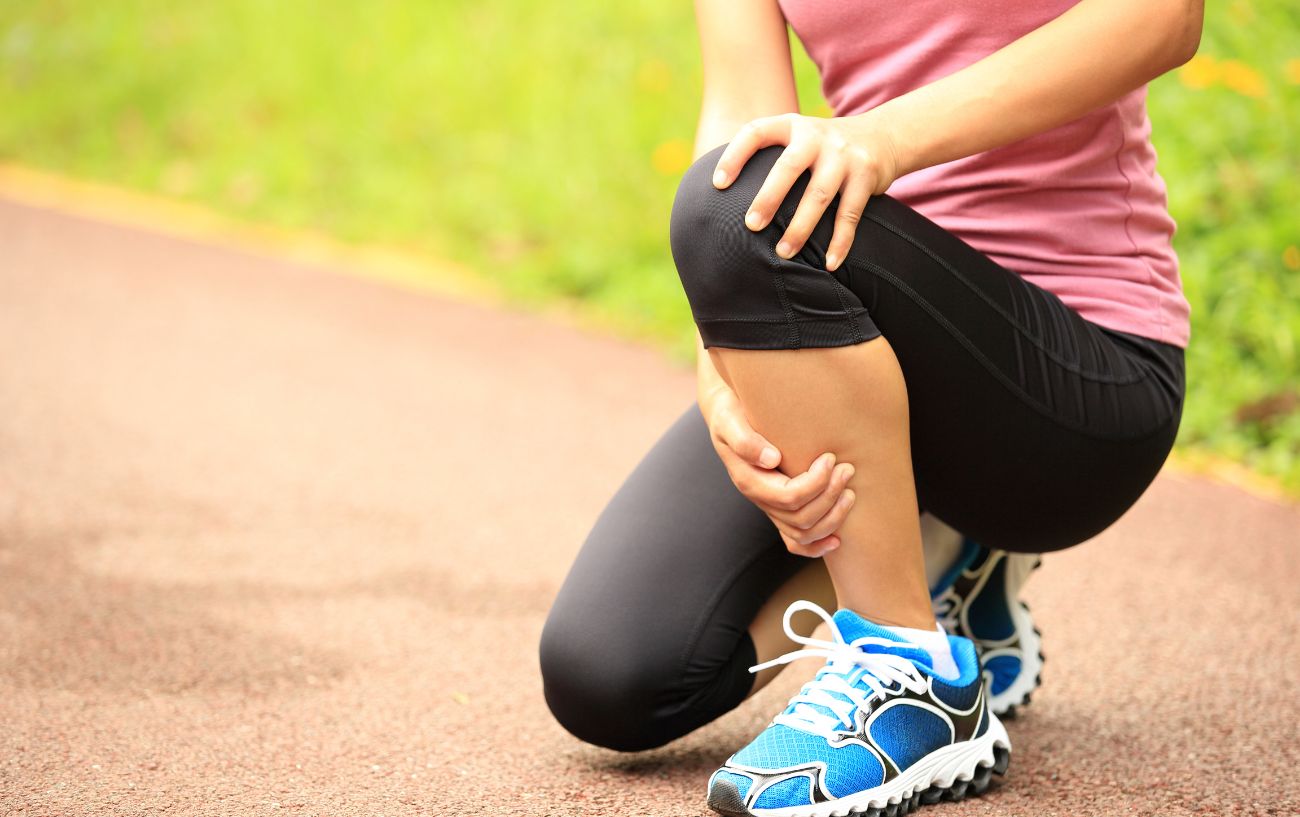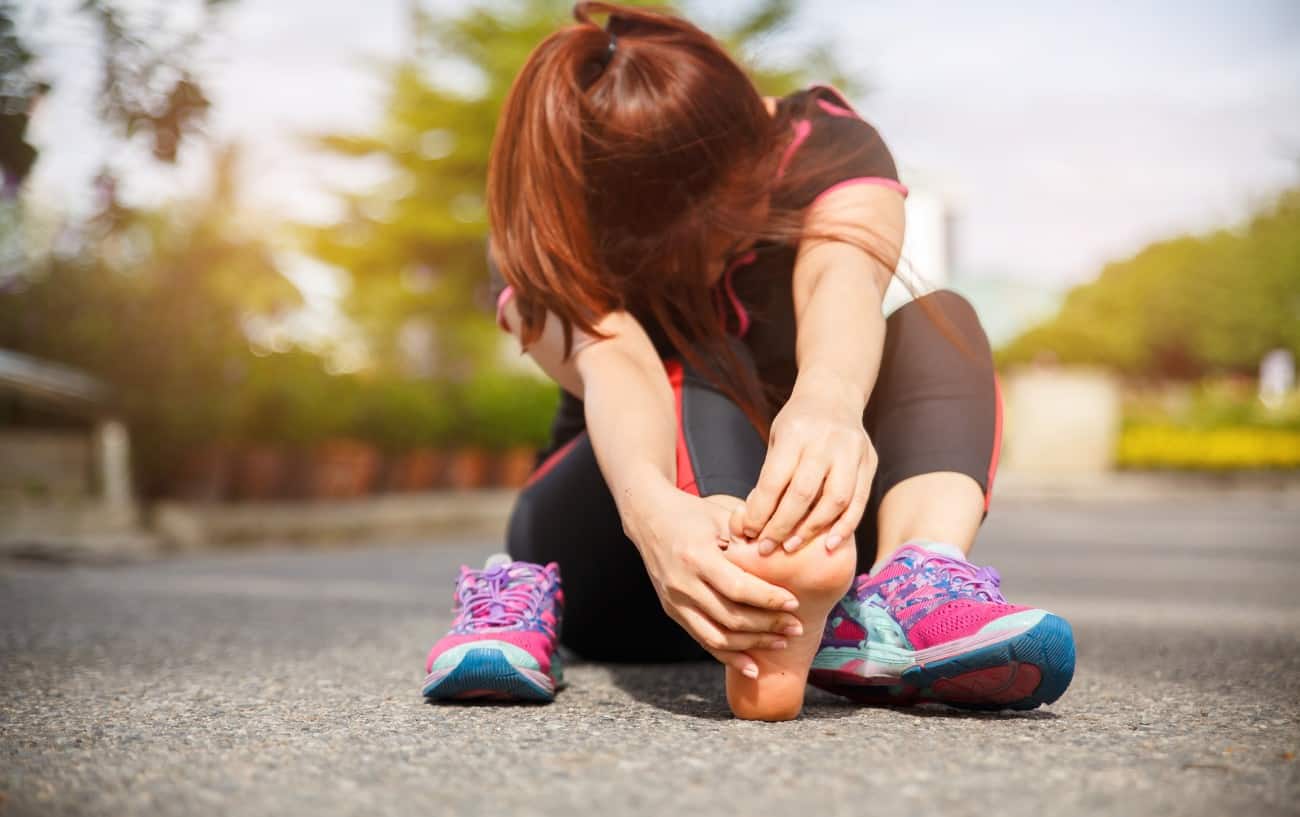Runners can be funny about their running shoes. As our sport is relatively simple in terms of equipment, some runners place a lot of stock in the impact their running shoes have on their performance and health as runners.
For many runners, the “right” pair of running shoes can make them faster or allow them to hit a PR, or they may believe they can fix running injuries like shin splints or runner’s knee. These types of runners are often continually on the hunt for new running shoes and tend to replace their running shoes frequently.
On the other hand, some runners feel so connected to a certain pair of shoes after sharing hundreds of miles together. For these runners, it can be really hard to finally retire old running shoes and replace them with new running shoes. But are there injuries caused by old running shoes if not replaced when necessary?
While wearing certain running shoes isn’t likely to bestow you with superpowers that shave minutes off your long-held PRs or cure an ongoing, persistent case of IT band syndrome, there are certain injuries that wearing old running shoes may potentially increase the risk of.

Does Wearing Old Running Shoes Increase the Risk of Injuries?
It’s a common belief amongst runners that running shoes are one of the primary factors that increase the risk of injury and that old running shoes cause certain injuries.
For example, a study that surveyed runners on their beliefs surrounding what causes running injuries found that “wearing the wrong shoes” was one of the most common responses.1Saragiotto, B. T., Yamato, T. P., & Lopes, A. D. (2014). What Do Recreational Runners Think About Risk Factors for Running Injuries? A Descriptive Study of Their Beliefs and Opinions. Journal of Orthopaedic & Sports Physical Therapy, 44(10), 733–738. https://doi.org/10.2519/jospt.2014.5710
Runners aren’t alone in their tendency to put a lot of stock in the impact of their footwear on their running performance and body health. Literature from running shoe companies and advice from most running coaches frequently urge runners to replace their running shoes every 300-500 miles or so.
But, is this advice founded on research? Are injuries caused by old running shoes?
Furthermore, what are “old” running shoes? Is an old running shoe just a worn-out running shoe or do running shoes last only a certain number of miles or kilometers, or months of use?
What does the research say?

Interestingly, there isn’t a ton of actual research looking at which specific injuries can be caused by wearing old running shoes.
With that said, there is some evidence to suggest that when runners wear old running shoes, they unconsciously alter their biomechanics when they run.2Kong, P. W., Candelaria, N. G., & Smith, D. R. (2009). Running in new and worn shoes: a comparison of three types of cushioning footwear. British Journal of Sports Medicine, 43(10), 745–749. https://doi.org/10.1136/bjsm.2008.047761
Researchers investigated the effect of shoe degradation on running biomechanics by comparing the forces and joint angles during running strides of running in shoes with different ages or mileage.
Results demonstrated that runners alter their biomechanics when running in old shoes, though this is done unconsciously. Stance time (or time on the foot before push-off) increased in old running shoes, and there was less forward lean of the body and more plantarflexion at push-off.
These biomechanical running style changes were surmised to be due to an effort to counteract the effects of having unstable cushioning remaining in old running shoes relative to newer running shoes.

How Do Old Running Shoes Increase the Risk of Injury?
It’s important to reiterate that wearing the “wrong” running shoes for your body or running in old running shoes doesn’t necessarily cause an injury, but worn-out shoes or running shoes that aren’t appropriate for your feet can certainly contribute to developing an injury, along with other factors such as your overall training and your biomechanics.
Running shoes are designed to benefit your body by controlling the amount of pronation of your feet and cushioning or absorbing shock upon landing.
If either of these factors are no longer afforded by your running shoes, your risk of injury may increase.
Pronation
Pronation essentially refers to the natural side-to-side or inward rolling of your foot when you run or walk.

During normal pronation, your foot rolls slightly inward with each step, as the flexible mediolateral arch of the foot flattens somewhat to attenuate the impact from landing on the foot. As a result, you land a little more on the medial edge of the foot (the inner edge, or the one closer to the other foot).
When you land on your midfoot or heel, the flexible foot pronates to cushion your landing. Normal pronation is about 15 degrees of an inward foot roll from the ankle.
This degree of pronation optimizes the alignment of the lower limb joints up the kinetic chain (ankles, knees, and hips), which can reduce the risk of injury because the bones and joints are in the correct position to receive the forces and shock from landing.
While some pronation—again, about 15 degrees—is normal and helps with shock absorption when you land, overpronation, which is excessive inward rolling of your foot beyond the 15 degrees, can increase the risk of injury.
Overpronation is particularly common in runners with flat feet or low arches. Overpronation places the foot and ankle in a poor position to absorb shock, and excessive pronation alters the line of stress going up the kinetic chain to your shins, knees, legs, and hips.
Therefore, distance runners who overpronate are at an increased risk of injuries such as plantar fasciitis, shin splints, and IT band syndrome.
Stability running shoes and motion-control running shoes are specifically designed to control the amount of pronation and prevent overpronation.
They have specific materials and construction elements, such as medial posting and a firm heel counter, to support the mediolateral arch of the foot and control the path of the foot from heel strike to toe off.
However, as running shoes wear out, these components can break down and the running shoe is no longer able to control pronation effectively.
This can allow the runner to overpronate, which can increase the risk of injury.

Cushioning
Similarly, most running shoes have cushioning to help absorb shock and attenuate the impact stresses when you run, unless they are minimalist or “barefoot” running shoes.
Your feet are subjected to forces approximately 2-3 times your body weight when you run, and all of the force that is not dampened by your running shoes and feet is transferred up your lower limb to your bones and joints.3NILSSON, J., & THORSTENSSON, A. (1989). Ground reaction forces at different speeds of human walking and running. Acta Physiologica Scandinavica, 136(2), 217–227. https://doi.org/10.1111/j.1748-1716.1989.tb08655.x
Running shoes use various foams, gels, air, or other types of cushioning to help absorb impact forces.
However, in the same way that the supportive structures and materials that help prevent overpronation break down as you wear your running shoes, so too do the materials that provide cushioning.
For example, the EVA foam used for cushioning in most running shoes can wear out over time such that the rebound and shock attenuation of the foam cushioning in worn-out or old running shoes is much less effective.
The foam becomes compressed and doesn’t bounce back to its pillowy nature between runs, meaning it has less give when you run. As a result, more of the shock and stress is absorbed by your feet and travels up to your shins, lower legs, knees, upper legs, hips, and lower back.
Thus, in a nutshell, old running shoes can increase the risk of injuries because they lose their support, cushioning, and responsiveness, which can alter your biomechanics and increase the stress going into your body.
Finally, old running shoes can have worn-out treads on the sole. This can potentially increase the risk of muscle pulls, tendon strains, or sprained ankles because traction will be poor and you can slip on wet pavement or twist an ankle on trails.
If your foot slips forward when you land when running downhill in the rain, for example, you may overstride, straining your groin or hamstrings.
It is interesting to note that studies have found that plantar pressures are actually higher in new running shoes.4Rethnam, U., & Makwana, N. (2011). Are old running shoes detrimental to your feet? A pedobarographic study. BMC Research Notes, 4(1). https://doi.org/10.1186/1756-0500-4-307

11 Common Injuries Caused By Old Running Shoes Explained
The following are some of the common injuries that may potentially be partially caused by wearing old running shoes:
- Stress fractures
- Shin splints
- Ankle sprains
- Patellar tendonitis
- IT band syndrome
- Extensor tendonitis
- Hamstring tendonitis
- Groin strains
- Achilles tendonitis5Karzis, K., Kalogeris, M., Mandalidis, D., Geladas, N., Karteroliotis, K., & Athanasopoulos, S. (2016). The effect of foot overpronation on Achilles tendon blood supply in healthy male subjects. Scandinavian Journal of Medicine & Science in Sports, 27(10), 1114–1121. https://doi.org/10.1111/sms.12722
- Blisters
Now that we have a better idea of the potential injuries caused by old running shoes, let’s see how often we need to replace them to decrease our risk.

How Often Should You Get New Running Shoes?
Most running shoe experts recommend changing your running shoes every 300-400 miles, or up to 500 miles for lighter long-distance runners. For those accustomed to kilometers, consider something in the 500-700 km range.
Another good rule of thumb is to divide 75,000 by your body weight in pounds and use that number as the running shoe mileage limit before you get a new pair.
For example, if you weigh 175 pounds, 75,000 / 175 = 429 miles.
Interestingly, when classifying a running shoe as “old,” it’s not just about mileage or the number of kilometers you’ve logged on the shoes.
The “age” of the shoe also matters because the materials, particularly the EVA foam of cushioned shoes, break down over time. The general recommendation is to replace your running shoes after 4-6 months, even if you haven’t hit 300 miles (500 km) in them.

There’s also evidence to suggest that rotating your shoes—which means wearing different pairs, or ideally different models and types of shoes, throughout the week—can reduce your risk of injury.
For example, one study that looked at the injury rates relative to running shoe use over 22 weeks found that runners who rotated their shoes had 39 percent fewer running injuries than runners who did all at least 90% of their training in a single pair of running shoes.
This is thought to be because different running shoes have slightly different builds, meaning that the materials in construction vary. Thus, the impact forces are distributed differently among various running shoes.
Therefore, when you rotate your running shoes, you’re sparing any one area of bone, muscle, joint, or connective tissue from constantly being subject to the exact same stress and line of force, lessening the risk of overuse injuries and helping with injury prevention.
Remember, although old sports shoes don’t necessarily cause running injuries, wearing worn-out shoes can certainly increase the risk of certain overuse injuries.
For guidance in choosing your next pair of running shoes, check out our How To Pick The Right Shoes Guide.
If you are suffering from significant back pain, heel pain, or any other pain from running, make sure to speak to a podiatrist or medical professional.














Thank you for the information about running shoe wear. I’m glad you included the calculation which included body weight. Few people talk about that. I’m wondering if pace has any impact on shoe wear. A person who averages a six minute mile will spend half the time on is feet as someone who runs a 12 minute mile. Will the additional time also add to wear?